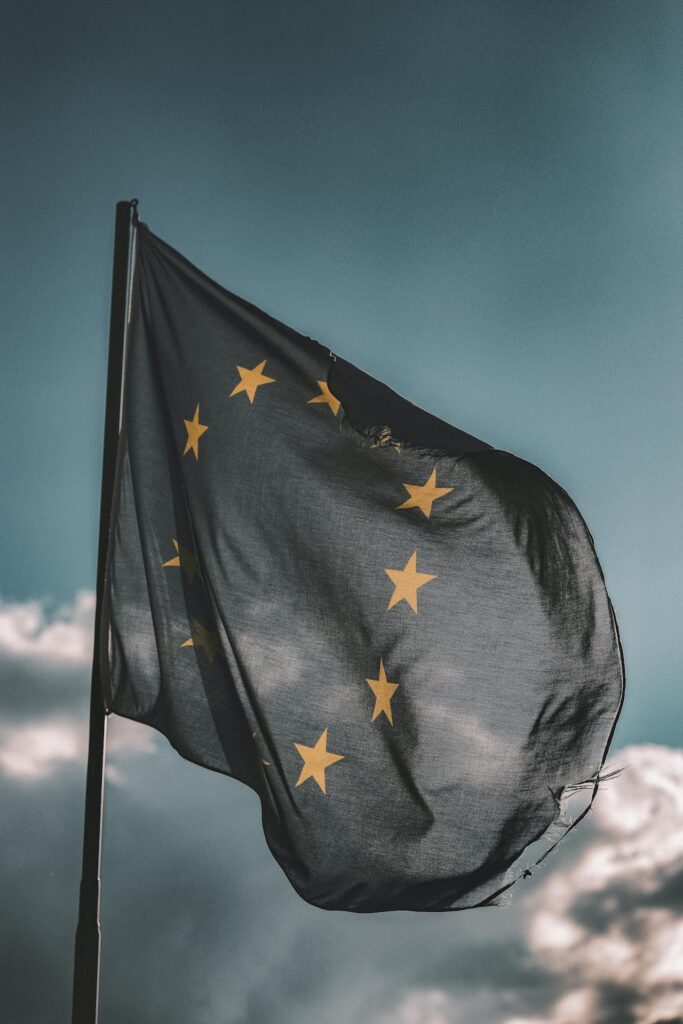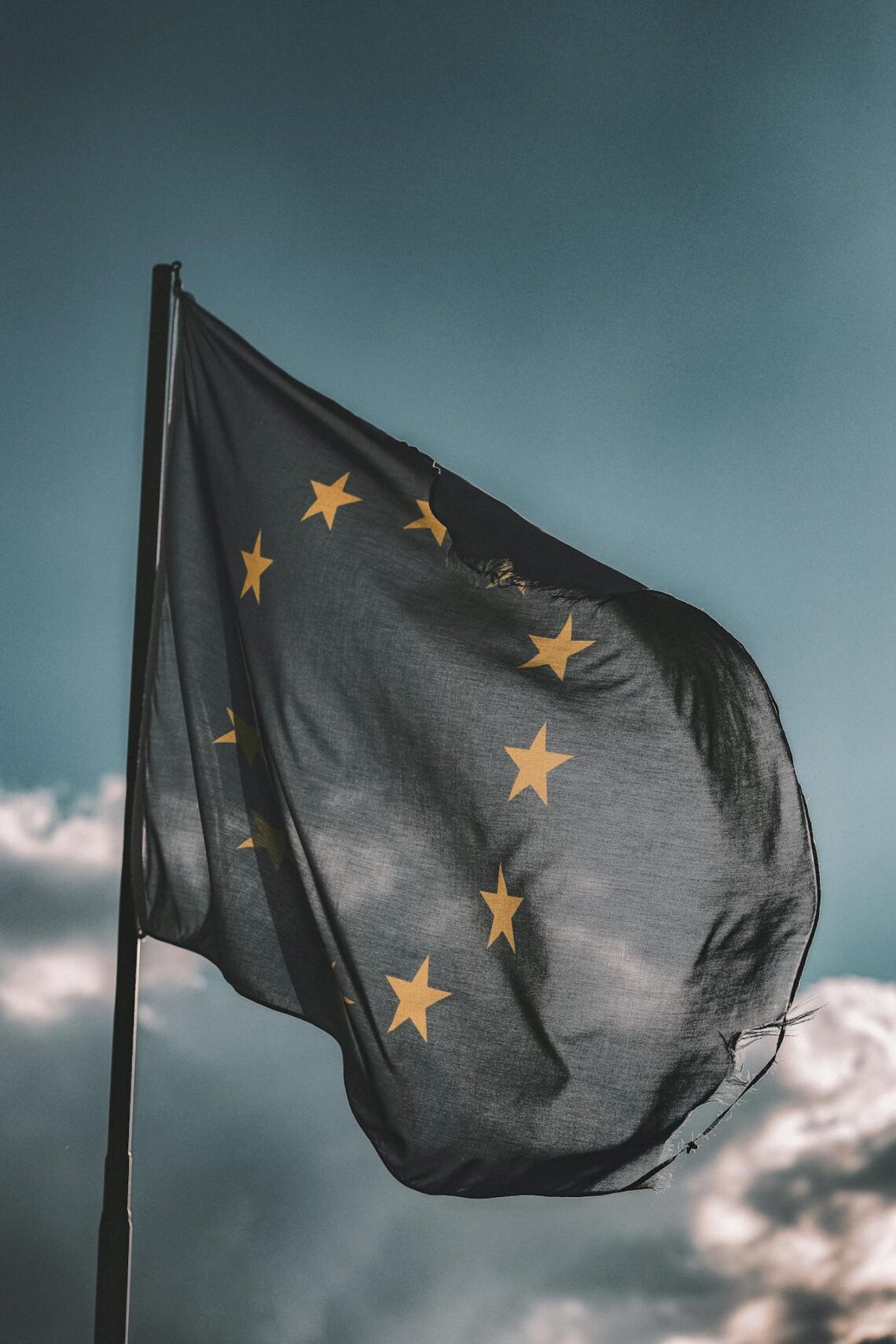The General Data Protection Regulation (GDPR) is one of the most significant and comprehensive data privacy laws ever enacted. Implemented in 2018, GDPR fundamentally changed how organizations handle personal data of European Union residents. This landmark regulation aims to give individuals more control over their personal information and harmonize data protection laws across Europe.
In today’s digital age, data has become an incredibly valuable asset for businesses. Companies collect vast amounts of personal information about their customers, from basic contact details to intricate behavioral data. While this data fuels innovation and personalized services, it also raises serious privacy concerns. Unauthorized access, data breaches, and misuse of personal information have become all too common.
GDPR was designed to address these growing privacy challenges in the modern, data-driven economy. It establishes strict rules for how organizations must collect, process, and protect personal data. More than just a compliance exercise, GDPR represents a paradigm shift in how we think about data privacy and security.
This comprehensive guide will explain everything you need to know about GDPR – what it is, who it applies to, key principles and requirements, individual rights, enforcement mechanisms, and its wider impact. Whether you’re a business leader, IT professional, marketer, or concerned citizen, understanding GDPR is crucial in today’s digital world.
What is GDPR?

The General Data Protection Regulation (GDPR) is a comprehensive data protection law that went into effect on May 25, 2018. It replaced the previous 1995 EU Data Protection Directive and was designed to harmonize data privacy laws across Europe, protect EU citizens’ data privacy, and reshape how organizations approach data privacy.
Some key aspects of GDPR include:
- Expanded territorial scope – GDPR applies to all companies processing personal data of EU residents, regardless of the company’s location
- Stricter consent requirements – Companies must obtain clear, affirmative consent to collect and use personal data
- Enhanced individual rights – EU residents have expanded rights regarding their personal data, including the right to access, correct, and erase data
- Mandatory breach reporting – Organizations must report certain data breaches within 72 hours
- Significant penalties – Fines for non-compliance can reach up to €20 million or 4% of global annual turnover
GDPR defines personal data very broadly as any information relating to an identified or identifiable natural person. This includes obvious identifiers like names and ID numbers, but also extends to online identifiers like IP addresses and cookie data.
The regulation lays out several core principles for processing personal data:
- Lawfulness, fairness and transparency – Data processing must be legal, fair, and transparent to the data subject
- Purpose limitation – Data should only be collected for specified, explicit and legitimate purposes
- Data minimization – Only personal data that is necessary for the specific purpose should be collected and processed
- Accuracy – Personal data must be accurate and kept up to date
- Storage limitation – Data should not be kept longer than necessary
- Integrity and confidentiality – Appropriate security measures must be in place to protect personal data
These principles form the foundation for GDPR compliance and reflect the regulation’s overall goal of enhancing individual privacy rights and control over personal data.
Who Does GDPR Apply To?
GDPR has an extremely broad scope and applies to a wide range of organizations both inside and outside the EU. Specifically, GDPR applies to:
- Any organization established in the EU that processes personal data, regardless of whether the processing takes place in the EU or not
- Organizations not established in the EU that offer goods or services to individuals in the EU or monitor the behavior of individuals in the EU
This means GDPR impacts not just European companies, but any global organization that handles personal data of EU residents. For example, a US-based e-commerce company that sells products to customers in Europe would need to comply with GDPR when handling those customers’ data.
GDPR makes no distinction between businesses and non-profit organizations. It applies equally to companies, charities, government agencies, and any other entity processing personal data.
The regulation also applies to both data controllers (organizations that determine the purposes and means of processing personal data) and data processors (organizations that process personal data on behalf of a controller). This means third-party service providers and vendors that handle personal data are also directly subject to GDPR requirements.
Some key types of organizations impacted by GDPR include:
- Multinational corporations doing business in Europe
- E-commerce companies selling to European customers
- Software and SaaS providers with European users
- Marketing agencies handling EU consumer data
- Hotels and travel companies serving European guests
- Universities with EU students or research subjects
- Healthcare providers treating EU patients
Even small businesses and startups may fall under GDPR’s scope if they collect or process personal data of EU residents. The regulation applies regardless of a company’s size or revenue.
Given its expansive reach, virtually any organization that handles personal data should carefully evaluate whether GDPR applies to their operations. When in doubt, it’s best to assume GDPR compliance is necessary to avoid potential penalties.
GDPR Principles and Lawful Purposes
At its core, GDPR is built on a set of fundamental principles that govern how personal data should be handled. These principles, outlined in Article 5 of the regulation, are:
- Lawfulness, fairness and transparency – Data must be processed lawfully, fairly and in a transparent manner.
- Purpose limitation – Data must be collected for specified, explicit and legitimate purposes and not further processed in a manner incompatible with those purposes.
- Data minimization – Data collection should be adequate, relevant and limited to what is necessary for the purposes for which it is processed.
- Accuracy – Data must be accurate and, where necessary, kept up to date.
- Storage limitation – Data should be kept in a form which permits identification of data subjects for no longer than is necessary for the purposes for which it is processed.
- Integrity and confidentiality – Data must be processed in a manner that ensures appropriate security, including protection against unauthorized or unlawful processing and against accidental loss, destruction or damage.
- Accountability – The controller shall be responsible for, and be able to demonstrate compliance with, the above principles.
These principles should guide all aspects of an organization’s data handling practices. They emphasize the importance of transparency, purpose-driven data collection, data minimization, and robust security measures.
In addition to these overarching principles, GDPR specifies six lawful bases for processing personal data:
- Consent – The individual has given clear consent for you to process their personal data for a specific purpose.
- Contract – The processing is necessary for a contract you have with the individual, or because they have asked you to take specific steps before entering into a contract.
- Legal obligation – The processing is necessary for you to comply with the law.
- Vital interests – The processing is necessary to protect someone’s life.
- Public task – The processing is necessary for you to perform a task in the public interest or for your official functions, and the task or function has a clear basis in law.
- Legitimate interests – The processing is necessary for your legitimate interests or the legitimate interests of a third party, unless there is a good reason to protect the individual’s personal data which overrides those legitimate interests.
Organizations must identify and document the lawful basis for each instance of data processing. This helps ensure that all data processing activities have a valid legal justification and aligns with GDPR’s core principles.
Understanding and applying these principles and lawful bases is crucial for GDPR compliance. They should inform all aspects of an organization’s data governance strategy and operational practices.
Rights of Data Subjects
One of GDPR’s primary goals is to empower individuals with greater control over their personal data. To that end, the regulation grants EU residents (referred to as “data subjects”) a set of specific rights regarding their personal information. These rights include:
- Right to be informed – Individuals have the right to know how their personal data is being collected, used, and shared. Organizations must provide clear and transparent information about their data processing activities.
- Right of access – Individuals can request access to their personal data and receive a copy of all data an organization holds about them.
- Right to rectification – If personal data is inaccurate or incomplete, individuals have the right to have it corrected or completed.
- Right to erasure (Right to be forgotten) – In certain circumstances, individuals can request the deletion of their personal data.
- Right to restrict processing – Individuals can request that an organization limit how it uses their data.
- Right to data portability – Individuals can request their personal data in a structured, commonly used, and machine-readable format, and have it transferred to another organization.
- Right to object – Individuals can object to the processing of their personal data for certain purposes, such as direct marketing.
- Rights related to automated decision making and profiling – Individuals have the right not to be subject to decisions based solely on automated processing that produce legal or similarly significant effects.
Organizations must facilitate the exercise of these rights and respond to requests within one month (with a possible two-month extension for complex requests). They cannot charge a fee for fulfilling these requests unless they are manifestly unfounded or excessive.
These rights give individuals unprecedented control over their personal data. For example, the right to erasure allows people to request that organizations delete their data, effectively allowing them to “disappear” from a company’s databases. The right to data portability enables individuals to easily switch service providers by taking their data with them.
However, these rights are not absolute and may be limited in certain circumstances, such as when the data is necessary for legal obligations or when the rights of others would be adversely affected.
To comply with GDPR, organizations need robust processes in place to handle these data subject requests efficiently and effectively. This often requires significant changes to data management systems and practices.
By empowering individuals with these rights, GDPR aims to create a more balanced relationship between organizations and the people whose data they process. It puts individuals back in control of their personal information and forces organizations to be more transparent and accountable in their data handling practices.
Responsibilities of Data Controllers and Processors
GDPR places significant obligations on both data controllers (entities that determine the purposes and means of processing personal data) and data processors (entities that process personal data on behalf of controllers). These responsibilities are designed to ensure that personal data is handled securely and in compliance with the regulation’s principles.
Key responsibilities for data controllers include:
- Implementing appropriate technical and organizational measures to ensure and demonstrate compliance with GDPR. This includes data protection policies, staff training, internal audits, and privacy by design principles.
- Maintaining records of processing activities, including purposes of processing, categories of data subjects and personal data, recipients of data, and envisaged time limits for erasure.
- Conducting data protection impact assessments (DPIAs) for high-risk processing activities to identify and mitigate privacy risks.
- Appointing a Data Protection Officer (DPO) if the organization engages in large-scale systematic monitoring or processes special categories of data.
- Ensuring contracts with data processors comply with GDPR and include specific clauses outlined in Article 28.
- Reporting data breaches to supervisory authorities within 72 hours and to affected individuals without undue delay if the breach is likely to result in a high risk to their rights and freedoms.
Data processors have their own set of obligations under GDPR, including:
- Processing data only on documented instructions from the controller
- Ensuring that persons authorized to process the data have committed to confidentiality
- Implementing appropriate security measures to protect personal data
- Assisting the controller in fulfilling its obligations to respond to data subject requests
- Deleting or returning all personal data to the controller at the end of the provision of services
- Making available to the controller all information necessary to demonstrate compliance with GDPR obligations
Both controllers and processors must implement “data protection by design and by default.” This means incorporating data protection principles into the design of systems and processes from the outset, rather than as an afterthought.
Organizations must also conduct regular risk assessments and implement measures to mitigate identified risks. This could include encryption, pseudonymization, ensuring ongoing confidentiality and resilience of processing systems, and having a process for regularly testing and evaluating the effectiveness of security measures.
GDPR’s accountability principle requires organizations to not only comply with the regulation but also to demonstrate their compliance. This often necessitates maintaining detailed documentation of data processing activities, policies, and procedures.
The regulation also encourages the use of approved codes of conduct and certification mechanisms to demonstrate compliance. These can help organizations show they are following best practices in data protection.
By placing these responsibilities on both controllers and processors, GDPR aims to create a comprehensive framework for protecting personal data throughout its lifecycle. It requires organizations to take a proactive, risk-based approach to data protection, embedding privacy considerations into all aspects of their operations.
GDPR Certification and Compliance

Achieving and maintaining GDPR compliance is an ongoing process that requires organizations to implement comprehensive data protection practices. While there is no official “GDPR certification,” there are various steps organizations can take to demonstrate their commitment to compliance:
- Data mapping and inventory: Create a detailed inventory of all personal data your organization processes, including what data is collected, where it’s stored, how it’s used, and who has access to it.
- Gap analysis: Compare your current data protection practices against GDPR requirements to identify areas that need improvement.
- Policy updates: Review and update privacy policies, consent forms, and data processing agreements to ensure they meet GDPR standards.
- Implement data protection measures: Implement technical and organizational measures to ensure data security, such as encryption, access controls, and regular security audits.
- Establish processes for data subject rights: Create clear procedures for handling data subject requests, such as access requests or requests for erasure.
- Train employees: Provide comprehensive training to all employees who handle personal data to ensure they understand GDPR requirements and their responsibilities.
- Appoint a Data Protection Officer: If required, designate a DPO to oversee data protection strategy and implementation.
- Conduct Data Protection Impact Assessments: Implement a process for conducting DPIAs for high-risk processing activities.
- Establish breach notification procedures: Create a clear protocol for detecting, reporting, and investigating data breaches.
- Document everything: Maintain detailed records of all data processing activities and compliance efforts.
While not mandatory, organizations can also pursue certifications from accredited bodies to demonstrate their commitment to data protection. The European Data Protection Board (EDPB) is working on guidelines for GDPR certification mechanisms, though these are still in development.
Some existing certifications that align with GDPR principles include:
- ISO 27001: An international standard for information security management systems
- BS 10012:2017: A British standard for personal information management systems
- NIST Privacy Framework: A voluntary tool developed by the U.S. National Institute of Standards and Technology to help organizations manage privacy risks
These certifications can provide a framework for implementing robust data protection practices and can serve as evidence of an organization’s commitment to privacy and security.
It’s important to note that compliance is an ongoing process, not a one-time achievement. Organizations need to regularly review and update their practices to ensure continued compliance as their operations evolve and as interpretations of the regulation develop through guidance and enforcement actions.
Ultimately, GDPR compliance requires a cultural shift within organizations, embedding privacy considerations into all aspects of operations and decision-making. It’s not just about following rules, but about adopting a privacy-first mindset that respects and protects individuals’ personal data.
Enforcement, Remedies, and Penalties
GDPR enforcement is carried out by national data protection authorities (DPAs) in each EU member state. These supervisory authorities have a range of investigative and corrective powers to ensure compliance with the regulation.
Key aspects of GDPR enforcement include:
- Investigative powers: DPAs can conduct audits, access an organization’s premises, and obtain access to any information necessary for their tasks.
- Corrective powers: Authorities can issue warnings, reprimands, and orders to bring processing operations into compliance. They can also impose temporary or permanent bans on processing.
- Authorization and advisory powers: DPAs can issue opinions on data protection issues and approve binding corporate rules.
- Fines: Perhaps the most discussed aspect of GDPR enforcement is its significant fining powers. There are two tiers of administrative fines:
- Up to €10 million or 2% of global annual turnover (whichever is higher) for less severe violations
- Up to €20 million or 4% of global annual turnover (whichever is higher) for more severe violations
These fines are designed to be “effective, proportionate and dissuasive.” They take into account factors such as the nature and gravity of the infringement, any action taken to mitigate damage, and the degree of cooperation with the supervisory authority.
Some notable GDPR fines to date include:
- €50 million fine for Google by the French DPA for lack of transparency and valid consent
- €204 million fine for British Airways by the UK ICO for poor security practices leading to a data breach
- €110 million fine for Marriott International by the UK ICO for a data breach affecting millions of customers
In addition to administrative fines, GDPR also provides for other remedies:
- Right to compensation: Individuals who have suffered material or non-material damage as a result of a GDPR infringement have the right to seek compensation from the controller or processor.
- Right to lodge a complaint: Data subjects can lodge complaints with supervisory authorities if they believe their rights under GDPR have been infringed.
- Right to effective judicial remedy: Individuals have the right to an effective judicial remedy against a supervisory authority, controller, or processor.
GDPR also allows for representative actions, similar to class action lawsuits, where a not-for-profit body can bring complaints on behalf of data subjects.
Enforcement of GDPR is still evolving, with DPAs taking different approaches and interpretations in some areas. The regulation’s complexity and the need for cooperation between authorities in cross-border cases can sometimes lead to delays in enforcement actions.
However, the potential for significant fines and reputational damage has motivated many organizations to take GDPR compliance seriously. The regulation has raised the stakes for data protection, making it a board-level concern for many companies.
It’s worth noting that compliance efforts themselves can serve as mitigating factors if a violation does occur. Organizations that can demonstrate they have made good faith efforts to comply with GDPR may face less severe penalties than those who have neglected their obligations.
GDPR’s Impact and Reception
The implementation of GDPR has had a profound impact on how organizations handle personal data, not just in Europe but globally. Its influence extends far beyond mere legal compliance, reshaping business practices and societal attitudes towards data privacy.
Key impacts of GDPR include:
- Increased awareness of data privacy: GDPR has brought data protection issues into the spotlight, raising public awareness about privacy rights and the value of personal data.
- Global influence: Many countries outside the EU have introduced or updated their data protection laws inspired by GDPR, leading to a global trend towards stronger privacy regulations.
- Changes in business practices: Organizations have had to review and often overhaul their data collection and processing practices, leading to more privacy-conscious business models.
- Investment in data protection: Companies have significantly increased their investment in data protection measures, including hiring Data Protection Officers and implementing new security technologies.
- More transparent data practices: GDPR’s requirements for clear and accessible privacy policies have led to increased transparency in how organizations use personal data.
- Empowerment of individuals: The regulation has given individuals more control over their personal data, with expanded rights to access, correct, and delete their information.
- Challenges for small businesses: While beneficial for consumers, GDPR compliance can be resource-intensive, posing challenges for smaller organizations with limited budgets.
- Impact on data-driven industries: Sectors heavily reliant on personal data, such as digital advertising, have had to adapt their practices to comply with GDPR’s stricter consent requirements.
- Increased focus on data minimization: Organizations are more carefully considering what data they truly need to collect and process, leading to more focused and efficient data practices.
- Rise of privacy as a competitive advantage: Some companies have embraced GDPR as an opportunity to differentiate themselves by offering superior privacy protections.
Reception of GDPR has been mixed. Privacy advocates and many consumers have welcomed the increased protections and control over personal data. Many businesses, while acknowledging the importance of data protection, have expressed concerns about the complexity of compliance and the potential for significant fines.
Critics of GDPR have pointed to several issues:
- Complexity: The regulation’s extensive and sometimes ambiguous requirements can be challenging to interpret and implement.
- Cost of compliance: Especially for smaller organizations, the resources required for full GDPR compliance can be substantial.
- Potential stifling of innovation: Some argue that GDPR’s strict rules could hamper data-driven innovation, particularly in areas like artificial intelligence.
- Inconsistent enforcement: There have been concerns about variations in how different EU member states interpret and enforce GDPR.
Despite these challenges, GDPR has undeniably elevated the importance of data protection in business operations and public discourse. It has set a new global standard for privacy regulations and forced organizations to take a more ethical and transparent approach to handling personal data.
As data continues to play an increasingly central role in our digital economy and society, GDPR’s principles of privacy by design, data minimization, and individual control over personal information are likely to remain crucial guiding concepts in the ongoing evolution of data protection laws and practices.
The Future of Data Protection Laws
As we look to the future, it’s clear that GDPR has set a new benchmark for data protection laws globally. Its influence is likely to continue shaping the evolution of privacy regulations and data handling practices worldwide. Here are some key trends and developments to watch:
- Global proliferation of data protection laws: Many countries are introducing or updating their data protection laws inspired by GDPR. Examples include Brazil’s LGPD, California’s CCPA, and India’s proposed Personal Data Protection Bill. This trend is likely to continue, potentially leading to a more globally harmonized approach to data protection.
- Increased focus on enforcement: As GDPR matures, we’re likely to see more robust and consistent enforcement actions. This could include larger fines and more proactive investigations by data protection authorities.
- Evolution of consent mechanisms: As current consent practices face scrutiny, we may see new, more user-friendly ways of obtaining and managing consent for data processing.
- AI and machine learning regulations: As AI becomes more prevalent, regulations specifically addressing the use of personal data in AI and machine learning algorithms are likely to emerge.
- Data localization laws: More countries may implement laws requiring certain types of data to be stored within their borders, potentially conflicting with GDPR’s provisions on international data transfers.
- Privacy-enhancing technologies: We’re likely to see continued development and adoption of technologies that enable data use while preserving privacy, such as homomorphic encryption and federated learning.
- Integration of privacy and cybersecurity: As data breaches continue to make headlines, we may see a closer integration of data protection and cybersecurity regulations and practices.
- Data ethics frameworks: Beyond legal compliance, organizations may increasingly adopt ethical frameworks for data use, considering not just what they can do with data, but what they should do.
- Evolution of data subject rights: Future regulations may expand on GDPR’s data subject rights, potentially including new rights such as the right to human review of algorithmic decisions.
- Sector-specific regulations: We may see more targeted regulations for specific sectors that handle sensitive data, such as healthcare and finance.
- Children’s privacy: Protecting children’s data online is likely to remain a key focus, with potentially stricter regulations around data collection and use for minors.
- Internet of Things (IoT) privacy: As IoT devices become more prevalent, regulations may evolve to address the unique privacy challenges they present.
The future of data protection laws will likely involve a balance between enabling the beneficial use of data and protecting individual privacy rights. As technology continues to evolve, regulations will need to adapt to address new challenges and opportunities in data processing.
Organizations will need to stay agile, continually updating their data protection practices to keep pace with evolving regulations and technologies. Those that embrace privacy as a core value and build flexible, privacy-centric data architectures will be best positioned to thrive in this changing landscape.
Ultimately, the future of data protection laws will be shaped by ongoing dialogue between regulators, businesses, privacy advocates, and the public. As our digital lives become increasingly complex, finding the right balance between data utility and privacy protection will remain a critical challenge for society to address.





